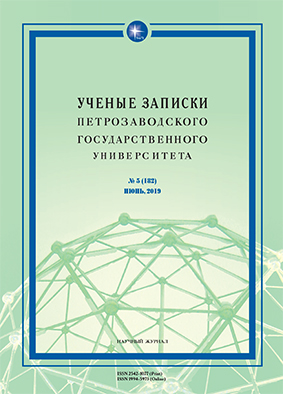Образы Финляндии и Карелии в русской романтической лирике: формирование поэтической традиции и синтактика
тропеических контекстов
IMAGES OF FINLAND AND KARELIA IN RUSSIAN ROMANTIC LYRIC POETRY:
FORMATION OF POETIC TRADITION AND SYNTAX OF TROPE CONTEXTS
Author(s): Nataliya Victorovna PatroevaSubject(s): Language and Literature Studies
Published by: Петрозаводский государственный университет
Keywords: landscape lyric poetry; syntactics of image; northern theme in Russian poetry; Finnish and Karelian motifs; northern landscape
Summary/Abstract: The poems of E. Baratynsky, P. Vyazemsky, A. Pushkin, A. Bestuzhev-Marlinsky, V. Benediktov, N. Yazykov, N. Konshin, F. Glinka, which are analyzed in this article, have a “Northern” theme and include the features of “Ossianic” landscape, motifs of memories, rich metaphorics and wide intertextual links. The image of Finland in the Russian poetic consciousness of the Romantic Era is primarily associated with the motifs of the stormy sea, granite rocks, eternal and unchanging calm, as well as the heroic epics of the skalds and the exploits of the heroes of the “midnight country”, that is, the special northern “Ossian” mythopoetics. The landscape sketches of rocks and forests over the lake, as well as the image of the waterfall prevail in the works devoted to the Karelian theme. The tradition of mentioning Peter’s transformations in connection with the northern theme of the romantic lyric poetry almost completely disappears. As a consequence, the image of Karelia, not Finland, turns out to be richer in cultural and historical associations in romantic poetry. The development of the “Finnish” and “Karelian” themes also differs in the syntactics (construction) of the images of two northern regions: when describing Finland, poets often use the model of the minimal context of attributive nominal word combinations, an easy poetic tradition that is assimilated as cliché formulas, while the depiction of the Karelian expanses is built primarily using the predicative models, by introducing not the individual details or mentioning the exotic phenomena, but by the lengthy descriptions with a whole range of landscape situations. Besides, such architectonics of the images of Finland and Karelia seems to be aimed at emphasizing panchronism and immutability in the depiction of the Finnish world (frozen mythical antiquity) and, on the contrary, the life of Karelian nature appearing in front of the lyric hero “here” and “now”.
Journal: Ученые записки Петрозаводского государственного университета
- Issue Year: 2019
- Issue No: 5 (182)
- Page Range: 37-42
- Page Count: 6
- Language: Russian

